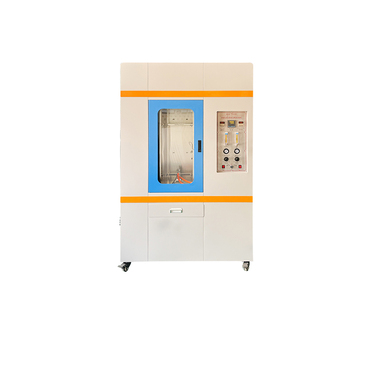Tensile Tester Clamp Solutions from Leading Manufacturers for Enhanced Performance and Reliability
Understanding Clamps for Tensile Testers An Overview for Manufacturers
In the world of material testing, tensile strength is one of the most critical parameters evaluated to ensure that materials can withstand the stresses imposed during their intended use. The equipment used for these tests, particularly tensile testers, plays a crucial role in measuring how materials respond to tension. A pivotal component of the tensile tester is the clamp, which secures the specimen and ensures precise measurements and reliable results. This article delves into the importance of clamps for tensile testers, the different types available, and considerations for manufacturers when selecting or designing these components.
The Importance of Clamps in Tensile Testing
Clamps are designed to grip the test specimen securely without damaging it. The primary function of these clamps is to prevent slippage during testing, which could lead to inaccurate data and compromised test integrity. Proper clamping is essential for producing consistent and reliable results, as any movement of the specimen during the tension test can introduce significant errors. By holding the material firmly, clamps facilitate accurate measurement of the force applied and elongation experienced before failure occurs.
Moreover, the compatibility of clamps with various materials is a key consideration. Different materials have unique surface characteristics that may require specific clamp designs to avoid slippage or damage. Therefore, manufacturers must understand the types of materials that their tensile testers will be used on and select clamps that best accommodate those specifications.
Types of Clamps
There are several types of clamps used in tensile testing, each designed for specific applications and materials. Some of the most common types include
1. Mechanical Clamps These clamps use a screw or lever mechanism to secure the specimen. They are straightforward to operate and are suited for a variety of samples. However, they may not provide the best grip for all materials, particularly those that are soft or ductile.
2. Pneumatic Clamps Utilizing air pressure for operation, pneumatic clamps can provide consistent clamping force, making them ideal for high-precision tests. They can be adjusted for different material types, but their complexity may require more maintenance.
3. Hydraulic Clamps Similar to pneumatic clamps but using hydraulic fluid, these are often used in heavy-duty applications where significant pressure is needed. Hydraulic clamps can handle larger specimens and forces but may be over-engineered for simpler testing scenarios.
4. Electromechanical Clamps These combine electrical and mechanical mechanisms to securely hold specimens. They offer high precision and adjustability, making them suitable for a range of applications. However, they tend to be more expensive and require electrical supply.
clamps for tensile testers manufacturers

5. Specialty Clamps For very specific testing requirements or materials, such as composites or fiber-reinforced plastics, manufacturers may design specialty clamps. These are tailored to meet the unique needs of the testing process and material properties.
Considerations for Manufacturers
When designing or choosing clamps for tensile testers, manufacturers should consider several factors
- Material Compatibility Understanding the material's characteristics is crucial. The clamp's surface treatment and grip design should minimize the risk of damage to the specimen.
- Load Capacity The clamps must be able to withstand the maximum load that the tensile tester is designed for. Manufacturers must choose clamps that will not fail under extreme conditions.
- Ease of Use Ease of operation is key for end-users. Clamps should enable quick specimen loading and unloading while ensuring safety and efficiency in testing.
- Maintenance Depending on the type of clamp, maintenance requirements may vary. Manufacturers should consider designs that allow easy access for cleaning and upkeep to prolong the lifespan of the clamps.
- Cost-Effectiveness While bespoke or specialized clamps can be beneficial, cost-effectiveness should always be a consideration, ensuring that the product remains competitive in the market.
Conclusion
In conclusion, clamps are a vital component of tensile testers, significantly influencing the accuracy and reliability of tensile tests. Manufacturers must carefully consider the type of clamps that best suit their testing needs, ensuring that they meet the required specifications for various materials. By prioritizing precision, compatibility, and user-friendliness, manufacturers can enhance the overall effectiveness of their tensile testing solutions and contribute to more accurate material evaluations.
-
Why the Conductor Resistance Constant Temperature Measurement Machine Redefines Precision
NewsJun.20,2025
-
Reliable Testing Starts Here: Why the High Insulation Resistance Measuring Instrument Is a Must-Have
NewsJun.20,2025
-
Flexible Cable Flexing Test Equipment: The Precision Standard for Cable Durability and Performance Testing
NewsJun.20,2025
-
Digital Measurement Projector: Precision Visualization for Modern Manufacturing
NewsJun.20,2025
-
Computer Control Electronic Tensile Tester: Precision and Power for the Modern Metal Industry
NewsJun.20,2025
-
Cable Spark Tester: Your Ultimate Insulation Assurance for Wire and Cable Testing
NewsJun.20,2025
 Copyright © 2025 Hebei Fangyuan Instrument & Equipment Co.,Ltd. All Rights Reserved. Sitemap | Privacy Policy
Copyright © 2025 Hebei Fangyuan Instrument & Equipment Co.,Ltd. All Rights Reserved. Sitemap | Privacy Policy
